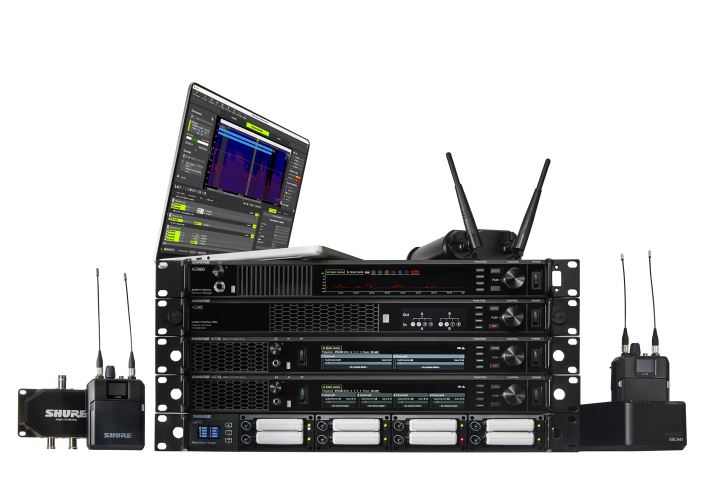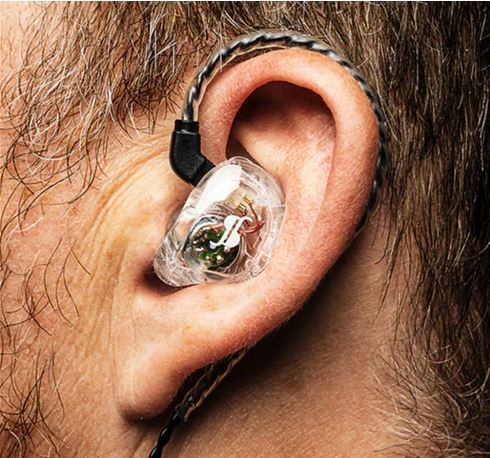If you’ve ever watched a live concert or a music awards show, you’ve probably noticed singers and musicians wearing little earpieces — and maybe even fiddling with them mid-performance. You might have wondered: What are those things in their ears? And why are they constantly adjusting them?
Those small devices are called In-Ear Monitors, or IEMs — and they have completely revolutionized the way live music is performed.

Let’s break it down in simple terms.
How It Used to Be: Big Floor Monitors Everywhere
Before IEMs, musicians relied on floor monitors — big speakers placed on the stage floor that faced back at them.
Each monitor blasted a custom mix of vocals, guitars, drums, or whatever the artist needed to hear to stay in time and in tune.
But there were big problems with this setup:
- Stage clutter: All those monitors took up lots of space.
- Volume wars: The monitors had to be loud to be heard over everything else — leading to deafening on-stage volumes.
- Poor sound control: Musicians often struggled to hear exactly what they needed, especially in noisy environments.
- Feedback: High on-stage volume often caused that awful squealing sound through the microphones.
It worked… but there could be better.

Enter IEMs: A Game-Changer
In-Ear Monitors changed everything.
Instead of relying on loud floor monitors, musicians now wear tiny earpieces that deliver a customized audio mix directly into their ears.
Here’s why they’re a game-changer:
- Customized Sound: Each musician can hear exactly what they want — vocals louder, guitar softer, more drums, less crowd noise — however they like it.
- Volume Control: Performers can adjust the volume to their own comfort level, reducing ear fatigue and long-term hearing damage.
- Space Saver: Without the need for floor monitors, stages are cleaner, safer, and more flexible for creative set designs.
- Less Stage Noise: A quieter stage means a better overall mix for the audience, fewer feedback issues, and more consistent sound.
- Perfect Fit: Many artists have custom-molded earpieces made for their ears only. Not only do they fit perfectly for comfort and isolation, but they can even be decorated — think colors, glitter, logos — to show off some personality!
Why Are They Always Adjusting Them?
You’ll often see singers tapping or adjusting their earpieces during a show.
That’s because live environments are unpredictable — sometimes they need to pop one out to hear the crowd, or adjust their fit if they move around a lot. Some might quickly tweak how it sits for better sound or comfort.
It’s totally normal — and a sign that the performer is trying to stay locked in to the best possible performance.
New Tech: The Shure Axient PSM 1000
Today’s IEM systems aren’t just earpieces — they’re cutting-edge wireless systems.
One of the best out there right now is the Shure Axient PSM 1000.
Why it’s a big deal:

- Remote Frequency Management: Technicians can change frequencies remotely without the artist even knowing.
This means less interference, fewer dropouts, and smoother performances — even in crowded RF environments like major festivals or arenas. - Rock-Solid Signal: Artists stay connected to their mix no matter where they roam on stage.
It’s a huge leap forward in making live performances more seamless and professional.

Fun Fact: Artists Don’t Like to Share
Here’s a backstage secret: Artists are VERY particular about their IEMs.
Most don’t like sharing their systems or earpieces — and for good reason:
- Hygiene (nobody wants to swap sweaty earpieces).
- Personal tuning (each IEM is carefully adjusted for their preferred mix).
- Comfort and fit (especially with custom-molded sets).
At big concerts or festivals, it’s not unusual to have hundreds of individual IEM systems deployed to accommodate all the acts — each with their own settings and gear!
Final Thoughts
So next time you see a performer wearing those tiny earpieces, you’ll know they’re not just there for looks — they’re a vital part of making live music sound incredible, feel comfortable, and stay safe for the musicians.

 May 1, 2025
May 1, 2025  Synergetic
Synergetic  Audio
Audio  September 30, 2025
September 30, 2025  Synergetic
Synergetic  About Us
About Us